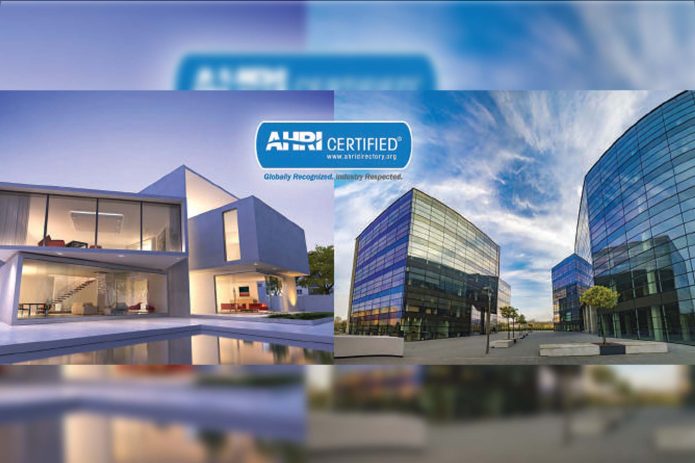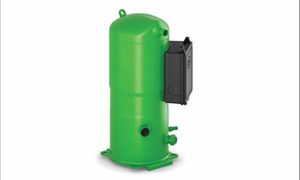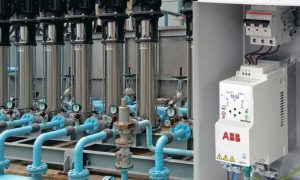India’s HVACR industry is evolving rapidly, driven by energy efficiency, smart technologies, market expansions, and green initiatives. Vikram Murthy, AHRI India representative, explores an in-depth look at the multiple paths shaping the industry’s future.
Multiple directions are shaping the future of the HVACR industry in India, particularly in terms of energy efficiency, smart control systems, AI, and penetration into new sectors. The expansion of the construction, infrastructure, housing, retail, and hospitality sectors has influenced India’s rising demand for HVACR products and services.
In 2023, air conditioners operating in India consumed around 190 TWH of energy, which is projected to reach 600 TWH by 2038 according to the ‘India Cooling Action Plan’ by the Ministry of Environment, Forests, and Climate Change from 2019. The plan foresees that 70 percent of the installed air conditioning capacity, primarily residential, will persist in 2038. This surge reflects the proliferation of residential buildings across India’s rapidly expanding tier 1, 2, and 3 cities, numbering over 150 and accommodating populations from 100,000 to 20 million. Studies indicate that once an Indian family’s annual income surpasses $10,000 in India, they buy their first air conditioner.
Currently, 70 percent of air conditioning equipment in India is unitary and is steadily growing in the residential sector. Commercial air conditioning is also expanding at a similar pace but is anticipated to constitute 30 percent of the market. Despite this, commercial air conditioning units in India typically operate for longer durations—two to three times that of residential units. So the annual energy consumed by residential and commercial sectors is about the same.
The key sectors such as hospitality, education, healthcare, and government initiatives are experiencing a boom in tier 1 & 2 cities. There’s substantial investment from federal and state governments in infrastructure for offices, airports, ports, and the fast-growing cold chain sector. All these developments are driving the demand for HVAC & R systems.
Moreover, new investments in high-tech manufacturing for defence, space, data centres, and electronics create new demand for precision air conditioning.
Green movement in India
India’s Green Movement spans over 23 years, originating with establishing the Indian Green Building Council (IGBC) in 2000, following the presence of the US Green Building Council. TERI and ASSOCHAM are among the other Green Rating Agencies in the country. With wide adoption and leading to influencing decisions – there is increased awareness and demand among end users for green technologies in India. A significant achievement for IGBC is surpassing one billion square feet of registered green building area across 1,505 projects. Additionally, several other buildings have received certifications from various Green Rating Agencies. The focus has shifted towards Net Zero Buildings, which serve as a new driving force for aspirational development.
The Ministry of Environment, Forests, and Climate Change has set a national benchmark by inaugurating its flagship office, the Indira Paryavaran Bhavan in New Delhi, as a Net Zero installation. Decarbonisation is a key mandate of the Government of India. Among its mandates, enhancing energy efficiency stands out as the most readily accessible means or primary method to conserve energy in the pursuit of decarbonisation. The Bureau of Energy Efficiency (BEE) oversees and regulates the energy labelling of unitary air conditioners and Chillers through a well-administered Chiller Star Labeling Program. Smart controls for air conditioners have become ubiquitous, seamlessly connecting to control panels and smartphones for monitoring and operations.
Another driver for Green Buildings is the Energy Conservation Building Code (ECBC) regulated by the government. Initially released in 2007 by BEE, it was updated in 2017 and will soon be upgraded to an Energy Conservation and Sustainable Building Code, ECSBC.
The majority of Indian States’ legislatures have adopted the 2017 Code. It applies to buildings with a connected load exceeding 1000 Kw. Building permits are given only if ECBC compliance is met during design and commissioning.

Latest technologies
The latest technologies are disrupting the commercial HVAC market in India. Manufacturers and Businesses must adapt to new technologies to succeed in the Indian commercial HVAC market. Disruptors of the commercial air conditioning HVAC market are just around the corner and will soon become mainstream. Some of these are controlled single-stage and two-stage evaporative cooling, radiant cooling, district cooling and super-efficient residential air conditioners. The latter, winners of the Global Cooling Prize, are undergoing extensive field testing and are projected to consume less than half the energy of today’s most efficient air conditioners.
Businesses must focus on the rapidly growing residential market by offering highly efficient air conditioners and leveraging economies of scale by adopting robotics and AI and developing superior supply chains. Government-backed production-linked incentives encourage manufacturers to produce within India to meet the escalating demand, leading to a ramp-up in production capacities.
The government’s mandate for decarbonisation poses a challenge for the building industry in reducing life cycle energy consumption. Although the global trend sees escalating construction costs due to increased demand and scarcity of raw materials and supply chains, innovative construction practices like modular construction are revolutionising the industry. There is a growing emphasis on reducing project completion time rather than solely focusing on the cost of raw materials.
On the demand side
The growing need for housing and infrastructure is being met by customers willing to pay higher costs due to their increasing incomes. In India, electric energy costs follow a tiered tariff structure, making it extremely affordable for lower incomes and quite accessible for higher incomes. Additionally, renewable energy costs are comparable to or lower than fossil fuel-generated energy in certain locations.
The Bureau of Energy Efficiency (BEE) in India acts as the regulatory body overseeing energy consumption in buildings and Building Services Equipment and Appliances. BEE initiated the Star Labelling program for air conditioners in 2006 as a voluntary measure, later making it mandatory in 2009. The energy efficiency benchmarks have been progressively driven upwards for unitary air conditioners. No unitary air conditioner can be sold in India without a Star Label.
Similarly, BEE introduced a voluntary Standards and Labelling Program for Chillers in 2019, which is slated to become mandatory by January 2024. These initiatives have had a positive impact on both businesses and consumers. They have fostered a competitive market where superior products drive sales for manufacturers and provide consumers with various choices. AHRI verifies Chiller performance to BEE for the Labelling Program, from the annual certification testing results of its program partner manufacturers.
The Indian market has consistently demanded certified products, and AHRI plays a crucial role in certifying a wide array of HVAC & R products in India. These certified products meet the standards expected by Indian specifiers and end users. Importantly, this certification enables Indian manufacturers to export their certified products to regions like Asia, the Middle East, and Africa, where regulated imports are demanded.
Indian manufacturers specialising in Chillers, VRF Units, Air Handling Units, and Data Center air conditioners are increasingly finding overseas markets as their performance is certified to world standards as provided by AHRI’s Certification Programs.
Retrofitting
Retrofitting is another emerging market due to the need to decarbonise existing buildings. There are substantial potential and market opportunities in retrofitting energy-efficient equipment and systems. Retrofitting of energy-efficient equipment and systems offers good margins for the manufacturer and contractor and benefits the buyer in terms of lower energy costs and improved indoor air quality – that fund the project in the long term.
India already possesses the necessary technologies for retrofitting, including efficient equipment, smart controls, advanced indoor air quality enhancement products, and onsite and offsite renewable energy solutions. The luxury hospitality and healthcare sectors are among the frontrunners in adopting retrofitting practices due to their direct benefits from reduced energy costs and customer satisfaction with better and safe indoor air quality. In conclusion, the outlook for the HVAC Industry in India is bright!
Cookie Consent
We use cookies to personalize your experience. By continuing to visit this website you agree to our Terms & Conditions, Privacy Policy and Cookie Policy.















